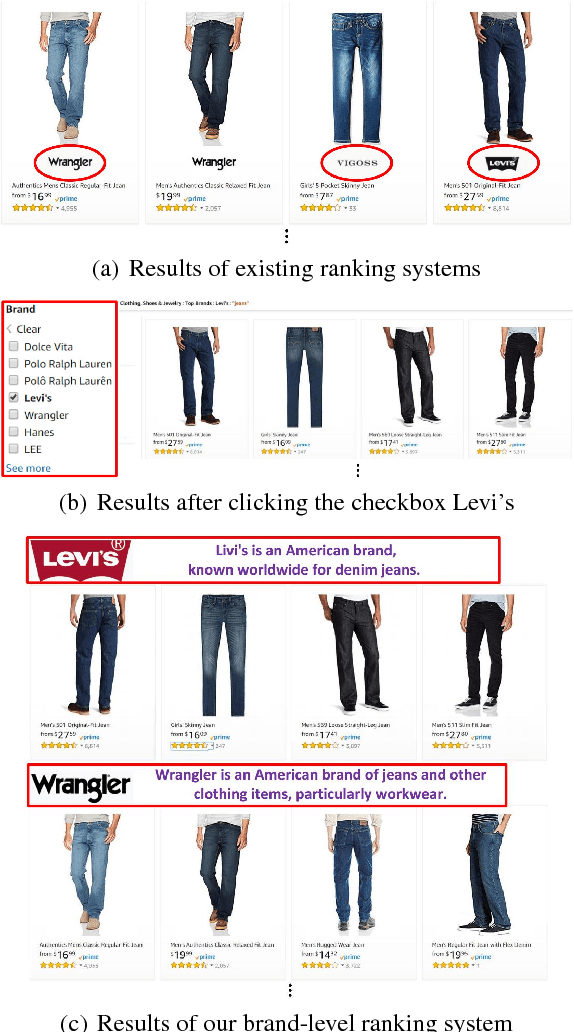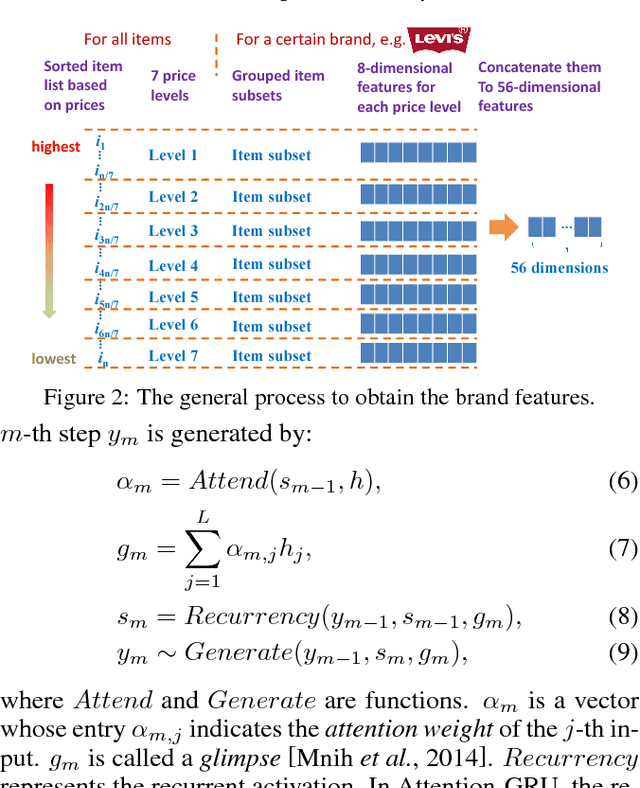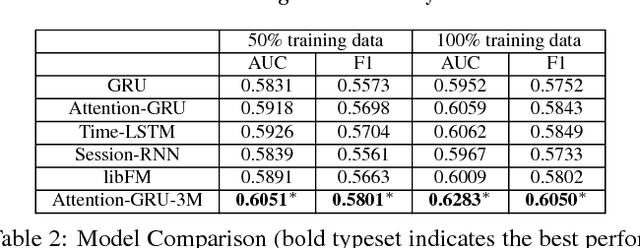Yongliang Li
Matrix embedding method in match for session-based recommendation
Aug 27, 2019



Abstract:Session based model is widely used in recommend system. It use the user click sequence as input of a Recurrent Neural Network (RNN), and get the output of the RNN network as the vector embedding of the session, and use the inner product of the vector embedding of session and the vector embedding of the next item as the score that is the metric of the interest to the next item. This method can be used for the "match" stage for the recommendation system whose item number is very big by using some index method like KD-Tree or Ball-Tree and etc.. But this method repudiate the variousness of the interest of user in a session. We generated the model to modify the vector embedding of session to a symmetric matrix embedding, that is equivalent to a quadratic form on the vector space of items. The score is builded as the value of the vector embedding of next item under the quadratic form. The eigenvectors of the symmetric matrix embedding corresponding to the positive eigenvalues are conjectured to represent the interests of user in the session. This method can be used for the "match" stage also. The experiments show that this method is better than the method of vector embedding.
A Brand-level Ranking System with the Customized Attention-GRU Model
Aug 11, 2018



Abstract:In e-commerce websites like Taobao, brand is playing a more important role in influencing users' decision of click/purchase, partly because users are now attaching more importance to the quality of products and brand is an indicator of quality. However, existing ranking systems are not specifically designed to satisfy this kind of demand. Some design tricks may partially alleviate this problem, but still cannot provide satisfactory results or may create additional interaction cost. In this paper, we design the first brand-level ranking system to address this problem. The key challenge of this system is how to sufficiently exploit users' rich behavior in e-commerce websites to rank the brands. In our solution, we firstly conduct the feature engineering specifically tailored for the personalized brand ranking problem and then rank the brands by an adapted Attention-GRU model containing three important modifications. Note that our proposed modifications can also apply to many other machine learning models on various tasks. We conduct a series of experiments to evaluate the effectiveness of our proposed ranking model and test the response to the brand-level ranking system from real users on a large-scale e-commerce platform, i.e. Taobao.
* 7 pages, 6 figures, 3 tables. Published in IJCAI 2018. Make some figures and tables more clear
 Add to Chrome
Add to Chrome Add to Firefox
Add to Firefox Add to Edge
Add to Edge